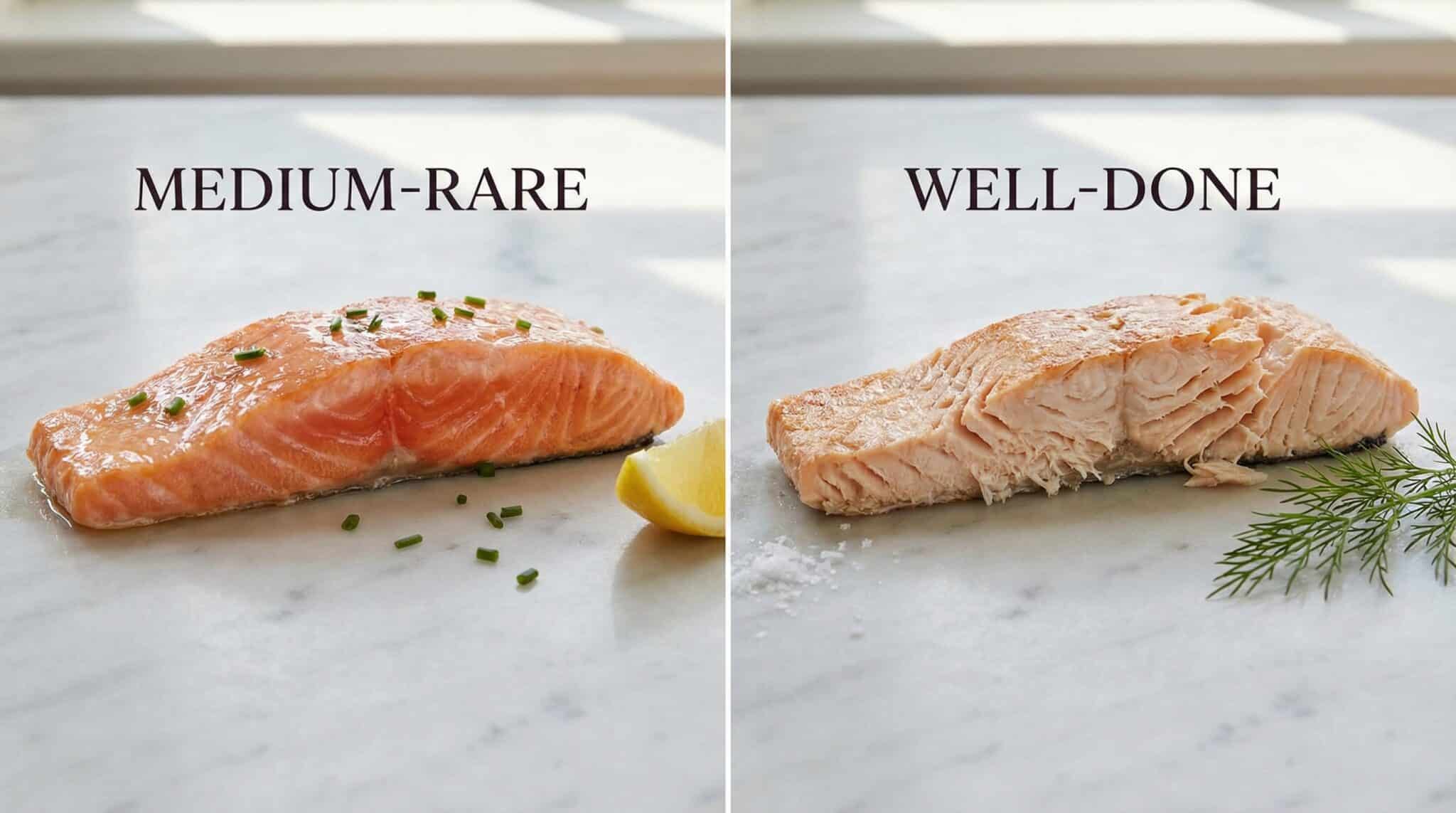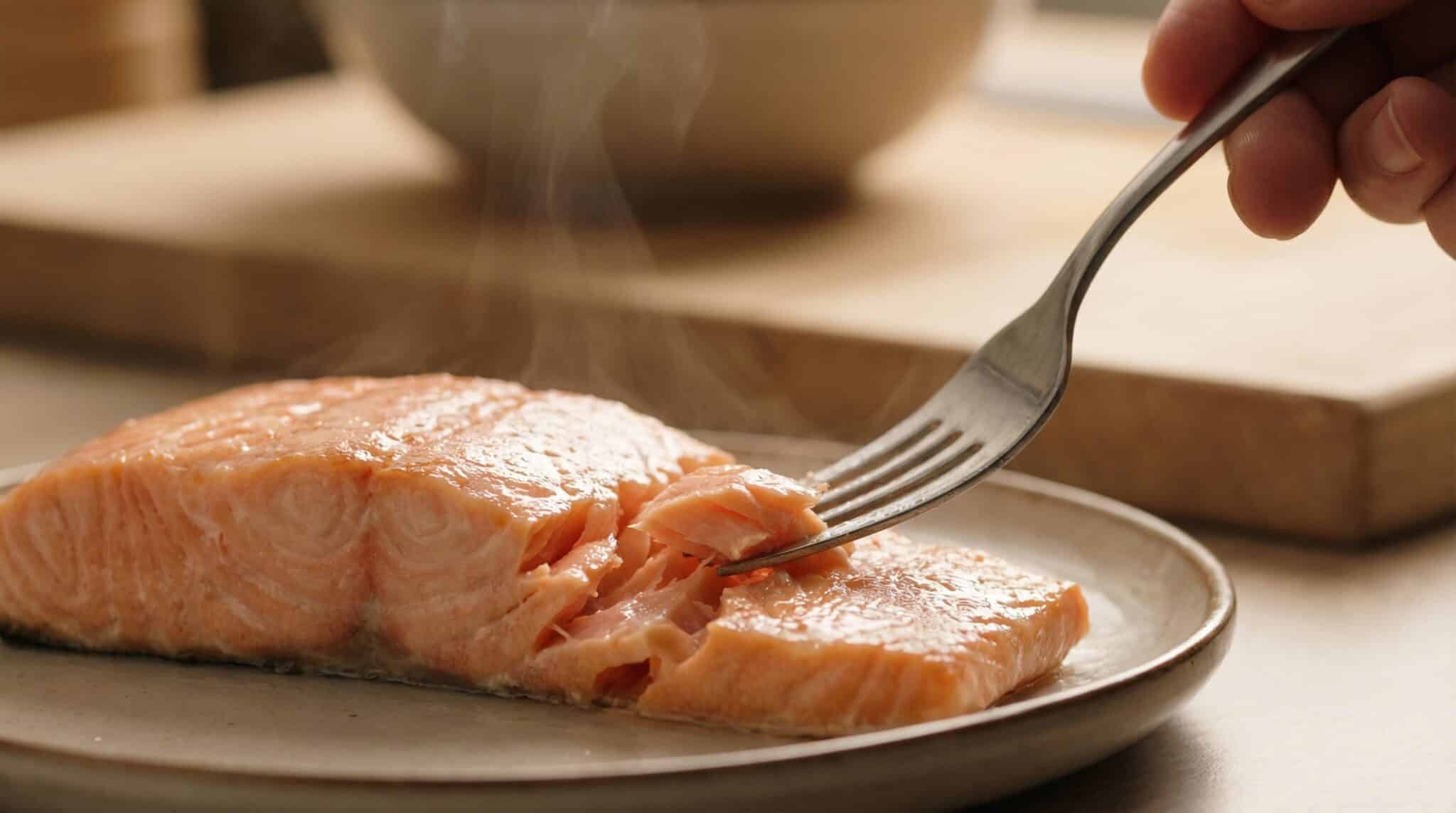Calamari is one of those dishes you have likely seen on a menu, maybe even tried, but might still wonder what it actually is.
Is it a fancy name for something else?
If you are curious about its origins, want to cook it right, or are trying to decide if it’s healthy, this guide has you covered.
Let’s break down everything you need to know about calamari, from what it really is, how it tastes, the best cooking methods, and even the healthiest ways to enjoy it.
What Does Calamari Taste Like?
The taste of calamari is one of the reasons it’s so beloved around the world.
It has a mild, slightly sweet, and delicate flavor with a hint of ocean brininess.
Well, it doesn’t taste fishy, which is why even people who don’t love seafood tend to enjoy calamari. And, its flavor is often described as nutty or buttery when cooked well.
The texture is equally important. Properly cooked calamari is tender with a bit of a bite, not mushy, but not tough.
However, if overcooked, it can turn rubbery very quickly. Getting the texture right is key to enjoying this seafood treat.
Nutritional Benefits and Considerations
| Health Benefit | Details |
|---|---|
| Protein | High in protein (~15g per 100g) |
| Fat | Low in fat (especially when grilled or baked) |
| Vitamins & Minerals | Rich in B12, selenium, zinc, and phosphorus |
| Omega-3 Fatty Acids | Supports heart health |
| Mercury Level | Low compared to larger fish |
For a lighter option, try grilled or baked calamari with herbs and olive oil instead of frying.
A Complete Process to Make Calamari
Making calamari at home is easier than you might think!
So, follow these steps to get perfectly tender, crispy, and delicious calamari every time.
Step 1: Choose the Right Calamari
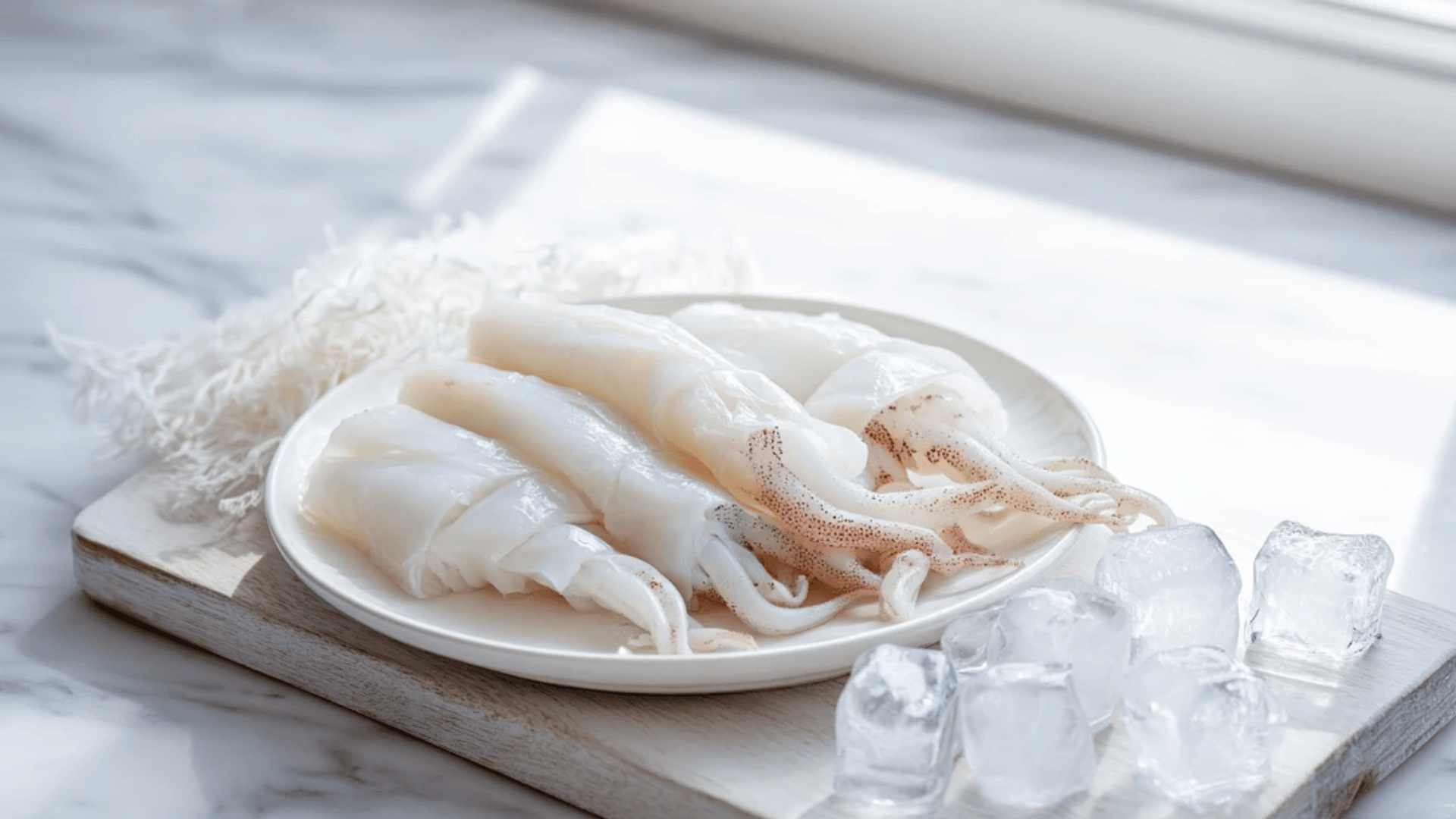
Look for cleaned calamari tubes and tentacles at your local seafood market or grocery store.
Fresh or frozen both work well, but frozen should be thawed overnight.
Make sure there’s no fishy odor; it should smell like the ocean, clean and light.
Step 2: Clean and Prep

If using whole squid, remove the head, innards, beak, and transparent cartilage. Peel off the skin if desired.
Then, cut the body into ¾-inch rings and leave the tentacles whole. For tenderizing, soak the cleaned calamari in milk or lemon juice for about 30 minutes.
Step 3: Set Up Your Breading Station
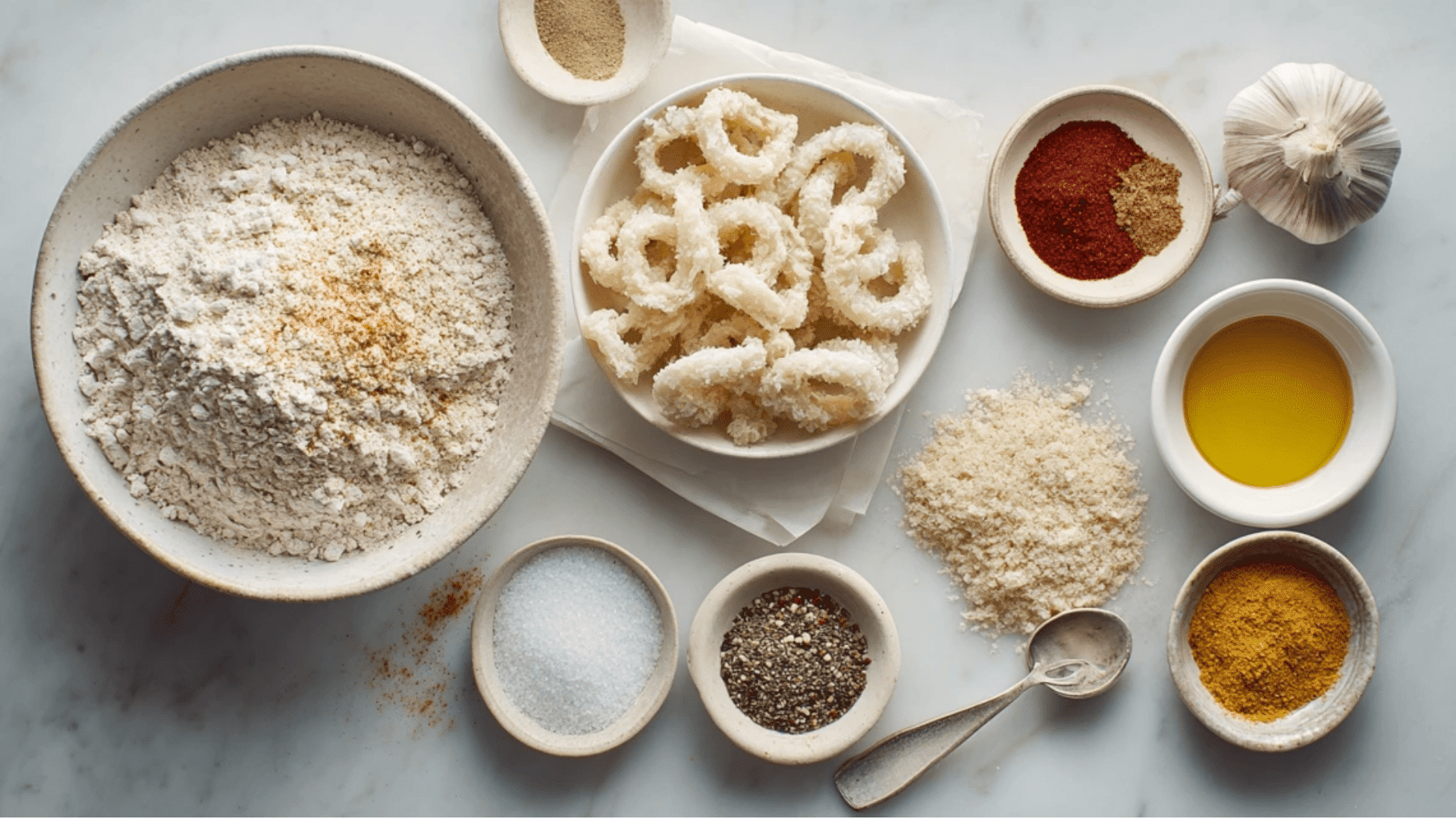
In one bowl, mix all-purpose flour and cornstarch with salt and pepper.
You can add paprika or garlic powder for extra flavor.
Keep a separate plate or tray ready for holding the dredged rings before frying.
Step 4: Heat the Oil
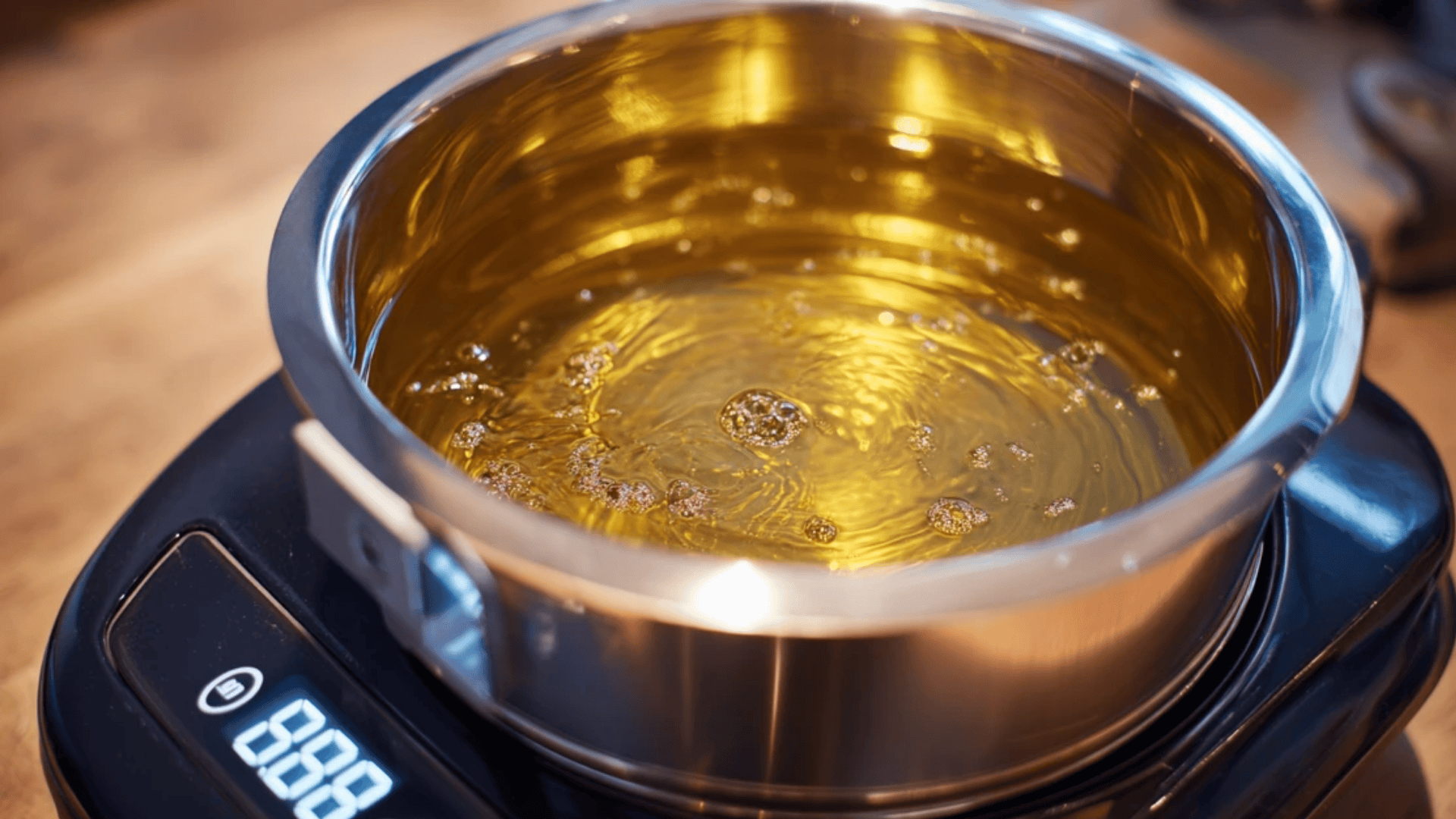
Pour vegetable or canola oil into a deep pot or heavy-bottomed skillet.
Then, heat it to 360°F (182°C).
Use a thermometer for accuracy, as oil that’s too hot burns the batter, while cooler oil makes soggy calamari.
Step 5: Dredge and Fry
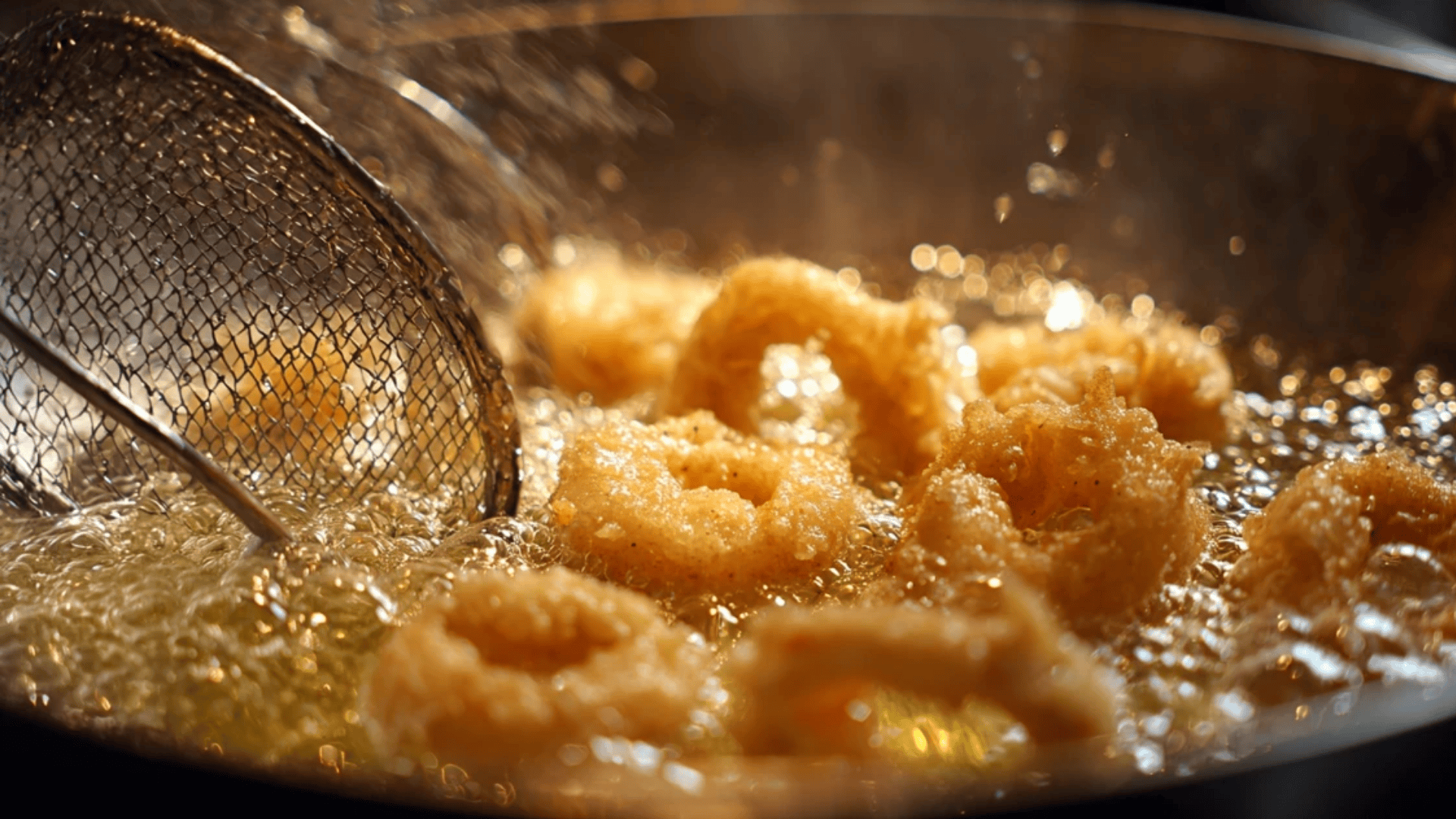
Dredge calamari rings and tentacles in the flour mix, shaking off the excess.
Then, fry in small batches for about 1.5 to 2 minutes until golden brown.
Don’t overcrowd the pan, or the temperature will drop too quickly.
Step 6: Drain and Serve
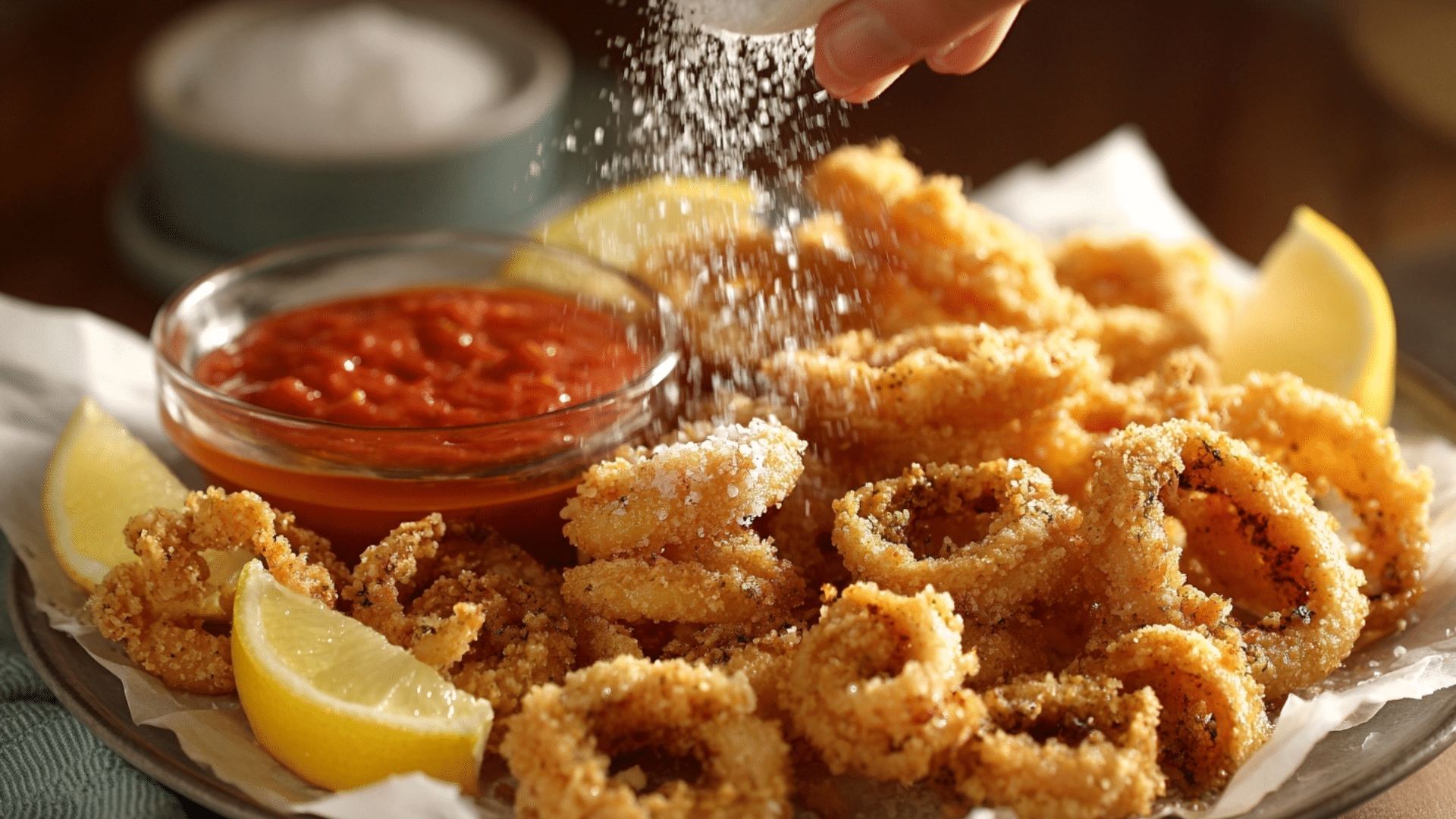
Once ready, remove fried calamari with a slotted spoon and place on paper towels to drain.
Sprinkle with sea salt immediately.
Just serve hot with lemon wedges and dipping sauces like marinara, aioli, or a squeeze of fresh lemon juice.
How to Store Calamari Completely Hassle-Free?
Keep your calamari fresh and safe with these quick tips:
- Use fresh calamari within 1–2 days (refrigerated)
- Freeze if not using right away
- Store in an airtight bag/container before freezing
- Thaw overnight in the fridge, not on the counter
- Frozen calamari is often flash-frozen at sea, just as good as fresh
Proper storage means better taste and less waste!
Difference Between Calamari and Squid
| Feature | Calamari | Squid |
|---|---|---|
| Meaning | Italian word for squid, used to describe squid dishes | A broad term for over 300 species of cephalopods |
| Species Used | Typically tender varieties like Loligo vulgaris (European squid) or longfin squid | May include firmer, tougher varieties not labeled as calamari |
| Texture | Softer, easier to chew | Can be tougher and more rubbery when cooked |
| Culinary Use | Preferred for quick cooking methods like frying or grilling | Often used in stews or slow-cooked recipes |
| Availability | Commonly sold, cleaned, and ready to cook | Often sold whole or in less-processed forms |
All calamari is squid, but not all squid is calamari, especially in the kitchen. Choosing the right species can make a big difference in tenderness and flavor.
Final Thoughts
Making calamari at home is simpler than it seems.
With the right ingredients, proper preparation, and a few quick frying tips, you will get restaurant-quality results right in your own kitchen.
If you serve it as an appetizer, party snack, or seafood main dish, crispy calamari never disappoints.
Don’t forget the lemon wedges and your favorite dipping sauce for that perfect final touch.
Try it today and bring the taste of the sea straight to your plate!
Frequently Asked Questions
Is Calamari Just Squid?
Yes. Calamari is a culinary term for squid, especially tender species used in cooking.
Why does Calamari Get Rubbery?
Overcooking. Quick cook (2–3 mins) or slow cook (30+ mins) only!
Can You Eat Calamari Raw?
Yes, in sushi and sashimi, just ensure it’s sushi-grade and cleaned properly.
What Sauces Go with Calamari?
Marinara, garlic aioli, lemon butter, tartar sauce, and spicy mayo are popular picks.
Is Calamari Healthy?
Yes, when not deep-fried, it’s a lean source of protein and nutrients.






